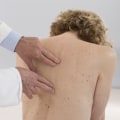An osteopath specializes in treating a range of musculoskeletal problems, employing manual therapy techniques to alleviate pain and improve overall body function. Common issues addressed include back pain, neck pain, joint pain, sports injuries, and postural problems stemming from work or lifestyle habits. Osteopaths also treat conditions like arthritis, sciatica, and headaches. Their approach is holistic, focusing not just on the symptoms but also on the underlying causes of discomfort. In addition to their specialized skills, osteopaths often emphasize the importance of overall health and may recommend practices like CPR courses for patients, highlighting the value of being prepared for health emergencies as part of comprehensive well-being.
Osteopathic doctor focuses on joints, muscles and spine. Osteopathic intervention can help treat arthritis, back pain, headaches, tennis elbow, digestive problems and postural problems. Treatment can also help with sleep cycles and nervous, circulatory, and lymphatic symptoms. An osteopath aims to restore normal joint function and stability to help the body heal on its own.
The National Institute for Health and Care Excellence states that manual therapy, such as osteopathy, can be used as a treatment option for low back pain and sciatica. Osteopathic doctors believe that touch can heal. All ODs are trained in osteopathic manipulative treatment, sometimes called manual manipulation or OMT. It is a practical method to help diagnose and treat diseases.
However, not all DOs regularly use it in their practice. One of the main ways that ODs are different from MDs is that they can use osteopathic manipulative treatment (OMT) to diagnose and treat diseases. They believe that tension and restriction in nerves and muscles can be caused by or cause other problems. Therefore, they use their hands to gently move joints and tissues to correct any restrictions in their range of motion.
Osteopathy is rarely available on the NHS, but your GP should be able to tell you if it is available in your area. Because osteopaths believe there may be a musculoskeletal link in many conditions, osteopathy can also help with a wider range of disorders. Also called osteopaths or DO, these doctors focus on the body, mind and spirit as part of an interconnected system. Most students who apply to osteopathic medical school first earn a bachelor's degree, and many also have a master's or doctorate degree.
Doctors of osteopathic medicine believe that all body systems work together and affect each other. They can also prescribe medications, perform surgeries, and treat patients of all ages through a wide variety of treatments that cover both allopathic (Western) and osteopathic medicine. Although osteopathy is best known as a form of practical medicine, osteopaths can also refer you to other healthcare providers and can offer advice on injury prevention, pain management, and rehabilitation programs. Although more research is needed to confirm the effectiveness of osteopathy, many people consider it safe and effective in treating their conditions.
In all 50 states, DOs, also called osteopaths or osteopathic doctors, are licensed to prescribe medications, perform surgeries, and use technological imaging to diagnose and treat diseases and injuries. Training to be an osteopath in Australia requires successful completion of a full-time five-year university degree. During your first osteopathy session, the osteopath will ask you about your symptoms, your general health, and any other type of medical care you receive before having a physical exam. Osteopathic manipulative therapy treats conditions that affect all body systems, including the musculoskeletal system, digestive system, nervous system, and immune system.
A doctor in osteopathy practices osteopathic manipulative medicine (OMM), a type of medication that includes practical treatments. The osteopath will use their hands to find areas of weakness, tenderness, restraint, or tension within the body, especially the spine. Buser, DO, Vice President of Health Affairs and Dean of Pikeville-Kentucky University; President-Elect of the American Osteopathic Association. Osteopathy, also known as osteopathic medicine, was founded by Dr. Andrew Taylor Still, an American doctor in the 19th century.







